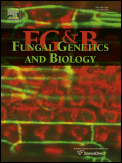Fungal Genetics and Biology
Fungal Genetics and Biology focuses on the study of genetics and molecular biology in fungi. This field encompasses a wide range of topics including the structure and replication of DNA, gene expression, mutation, genetic recombination, and genome organization. Fungi serve as important models for understanding basic biological processes due to their unique characteristics and the ease with which they can be manipulated in a laboratory setting.
Overview[edit | edit source]
Fungal genetics has been a cornerstone of modern biology, providing insights into the genetic basis of life that are applicable across all domains of life. The study of fungal genetics has led to significant discoveries, including the mechanisms of genetic variation, the regulation of gene expression, and the genetic control of development and metabolism. Fungi, including both yeasts like Saccharomyces cerevisiae and molds like Neurospora crassa, have been instrumental in the development of genetic engineering and biotechnology.
History[edit | edit source]
The history of fungal genetics can be traced back to the early 20th century, with the pioneering work of scientists such as George Beadle and Edward Tatum. Their experiments with Neurospora crassa in the 1940s demonstrated the one gene-one enzyme hypothesis, laying the foundation for molecular genetics. Since then, research in fungal genetics has expanded, benefiting from advances in DNA sequencing, bioinformatics, and genetic manipulation techniques.
Key Concepts[edit | edit source]
Gene Expression and Regulation[edit | edit source]
Fungal genetics has contributed significantly to our understanding of how genes are turned on and off. Studies in fungi have elucidated the complex networks of gene regulation, including the roles of promoters, enhancers, and transcription factors.
Genetic Recombination and Mutation[edit | edit source]
Fungi undergo sexual and asexual reproduction, providing ample opportunities for genetic recombination and mutation. These processes are crucial for generating genetic diversity, which can be studied in fungi to understand evolutionary mechanisms and adaptation.
Genome Organization[edit | edit source]
The organization of fungal genomes has revealed much about the structure and function of eukaryotic genomes in general. Fungi exhibit a wide range of genome sizes and complexities, from the relatively simple yeasts to more complex molds.
Research and Applications[edit | edit source]
Fungal genetics research has practical applications in many areas, including medicine, agriculture, and industry. Fungi are used in the production of antibiotics, enzymes, and other biochemicals. Genetic studies of pathogenic fungi are crucial for understanding and controlling fungal diseases in humans, plants, and animals.
Future Directions[edit | edit source]
The future of fungal genetics promises further insights into genetic mechanisms and their applications. With the advent of CRISPR and other genome editing technologies, fungi are becoming even more important as models for genetic research. Additionally, the study of fungal biodiversity and ecology through genetic methods is an expanding field that holds great potential for understanding and exploiting the roles of fungi in natural environments.
Navigation: Wellness - Encyclopedia - Health topics - Disease Index - Drugs - World Directory - Gray's Anatomy - Keto diet - Recipes
Search WikiMD
Ad.Tired of being Overweight? Try W8MD's physician weight loss program.
Semaglutide (Ozempic / Wegovy and Tirzepatide (Mounjaro / Zepbound) available.
Advertise on WikiMD
WikiMD is not a substitute for professional medical advice. See full disclaimer.
Credits:Most images are courtesy of Wikimedia commons, and templates Wikipedia, licensed under CC BY SA or similar.Contributors: Prab R. Tumpati, MD

